Key takeaways:
- Second-hand shopping promotes sustainability, individuality, and community, with each item carrying its unique story.
- The benefits of second-hand fashion include environmental impact, affordability, and a sense of camaraderie among shoppers.
- Feminist fashion principles emphasize empowerment, inclusivity, and ethical consumption, advocating for diverse sizing and support for marginalized communities.
- Key tips for effective second-hand shopping involve being patient, open-minded about sizing, and engaging with sellers to enhance the shopping experience.
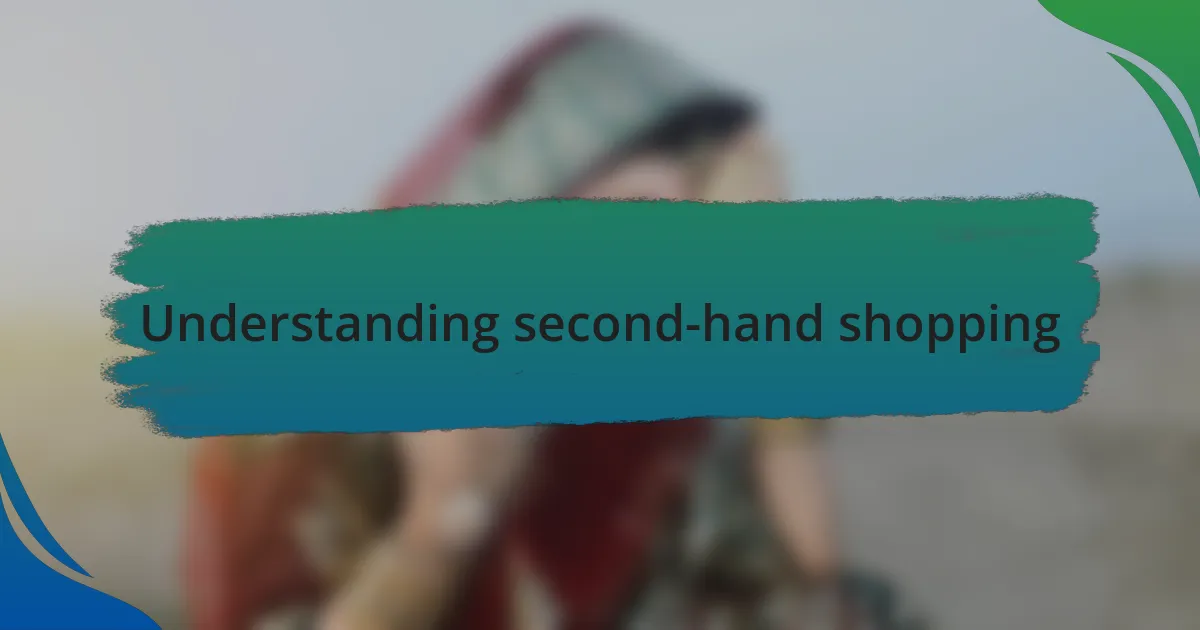
Understanding second-hand shopping
Understanding second-hand shopping extends beyond mere thriftiness; it’s about embracing a sustainable lifestyle. I remember the thrill of my first thrift store visit, where I unearthed a vintage blouse that felt like a treasure, not just because of its uniqueness but for the story behind it. Don’t you love the idea that every piece of clothing carries memories from someone else’s life?
As I navigated through racks of garments, I realized that second-hand shopping offers a valuable opportunity to express individuality. When I wear something vintage, it often leads to conversations with others who appreciate the rich narratives woven into each fabric. This shared connection cultivates a sense of community—who knew a simple skirt could bring strangers together over shared experiences?
Moreover, there’s an underlying excitement in second-hand shopping that isn’t present in traditional retail. I often find myself wondering, “What will I discover today?” It’s a delightful mix of anticipation and surprise, a sourcing adventure where the thrill of the hunt is as rewarding as the finds themselves. Isn’t that a refreshing take on consumerism?
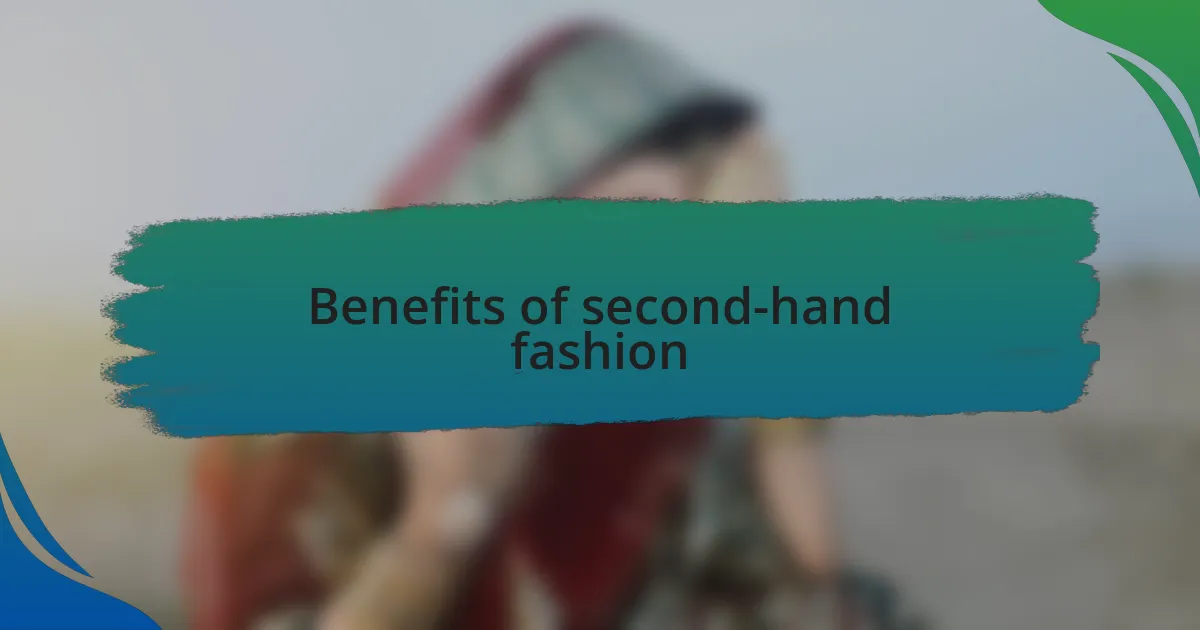
Benefits of second-hand fashion
The benefits of second-hand fashion are substantial, both for the individual and the planet. For instance, I’ve noticed that shopping for pre-loved clothing not only helps reduce waste but also fosters creativity in how I style my outfits. Each piece holds a unique story, and when I mix and match them, I feel like I’m participating in a greater narrative—one that’s rich with history and character.
Beyond the environmental impact, second-hand fashion offers incredible savings. I remember scoring a designer handbag at a fraction of its original price, which not only elevated my wardrobe but also allowed me to save money for other passions, like travel. Isn’t it empowering to know that you can remain stylish without breaking the bank or compromising on quality?
Lastly, there’s an undeniable sense of camaraderie in the second-hand community. I often share my finds with friends, who get just as excited as I do. It’s refreshing to connect with others who appreciate the charm of reused items, creating a special bond over our mutual love for sustainable fashion choices. Have you ever experienced that exhilaration when a friend compliments your thrifted find? It’s a testament to the power of thoughtful shopping.
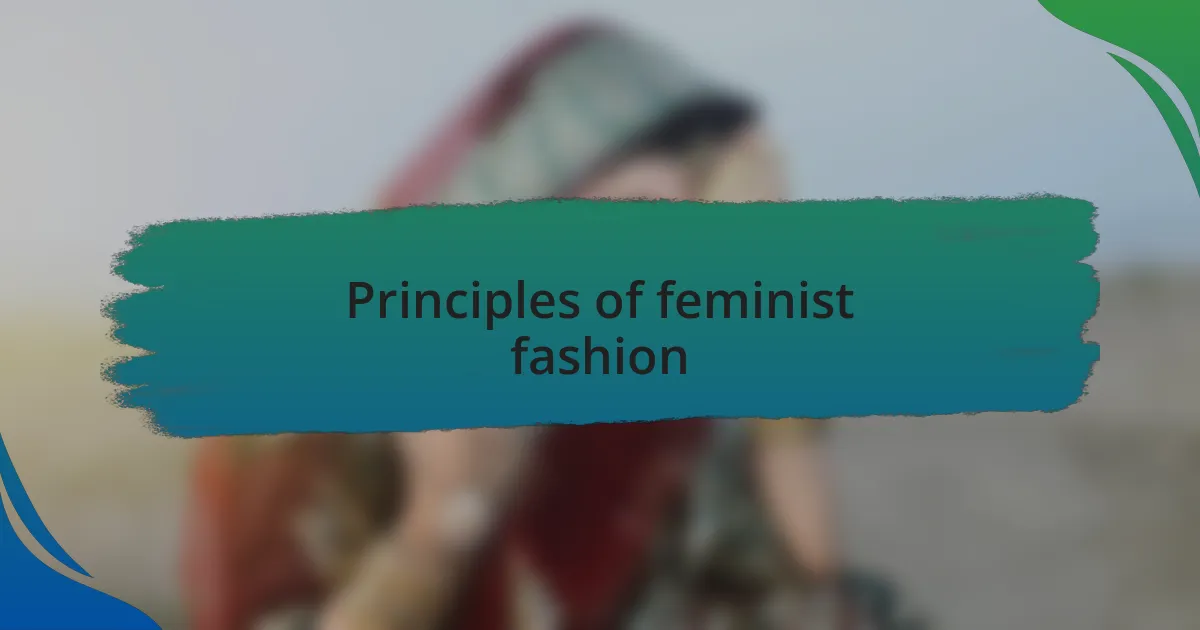
Principles of feminist fashion
The principles of feminist fashion center around empowerment, inclusivity, and sustainability. I often find it inspiring that this movement advocates for clothing choices that reflect individual identities and resist societal norms. Clothing should serve as a medium of self-expression while challenging the restrictive fashion industries that often prioritize profit over ethics. What if our wardrobe choices could redefine not only how we feel but also how we perceive ourselves in the world?
Inclusivity is another vital aspect of feminist fashion. I personally appreciate brands that offer diverse sizing and styles that cater to all body types. Making fashion accessible to everyone fosters a sense of community, creating spaces where individuals can feel seen and respected. Have you ever walked into a store and felt like nothing represented you? This is why it’s essential for fashion to be inclusive; it shouldn’t alienate anyone, but rather bring everyone together.
Sustainability ties closely with these principles, promoting a conscious approach to consumption. I’ve learned that supporting slow fashion not only benefits the planet but also uplifts marginalized communities, as many second-hand shops are often linked to charitable causes. Isn’t it powerful to know that every purchase can contribute to positive social change? By embracing these principles, we’re not just altering our closets; we’re joining a movement that values ethics, diversity, and resilience in the world of fashion.
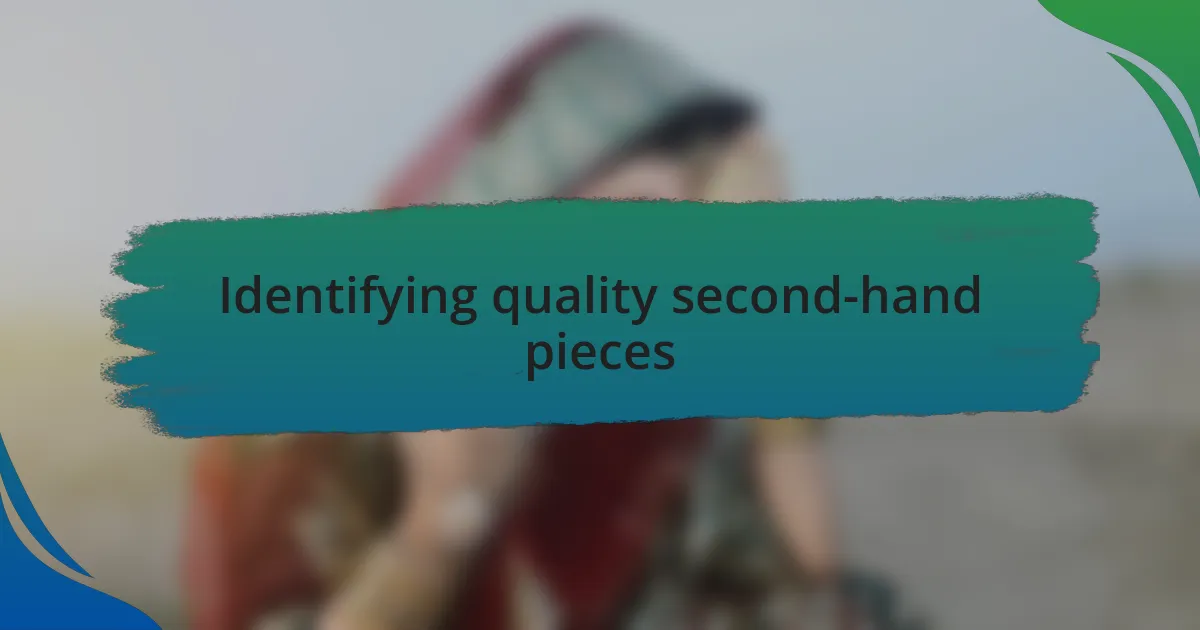
Identifying quality second-hand pieces
When I embark on a second-hand shopping adventure, my first step is to carefully examine the fabric quality. I’ve found that natural fibers like cotton, wool, and silk tend to be more durable and can withstand the test of time better than synthetic alternatives. Have you ever held a piece in your hand and felt the difference? That tactile sensation can tell you so much about its potential longevity.
Next, I pay attention to construction details. Seams should be straight and neatly finished, which indicates that the piece was made with care. I’ve encountered beautiful garments that looked appealing at first glance, only to discover loose threads or uneven hems upon closer inspection. It’s a real letdown—so I always remind myself, finding that perfect piece is worth the extra moment to inspect before buying.
Lastly, I check for any signs of wear, such as fading, pilling, or stains. While minor imperfections can add character, excessive signs can mean compromised quality. I once found a vintage dress I adored, but a large stain proved too daunting to tackle, leaving me disappointed. Reflecting on that experience, I’ve learned that it’s essential to balance excitement with practicality—quality should always guide our choices in second-hand shopping.
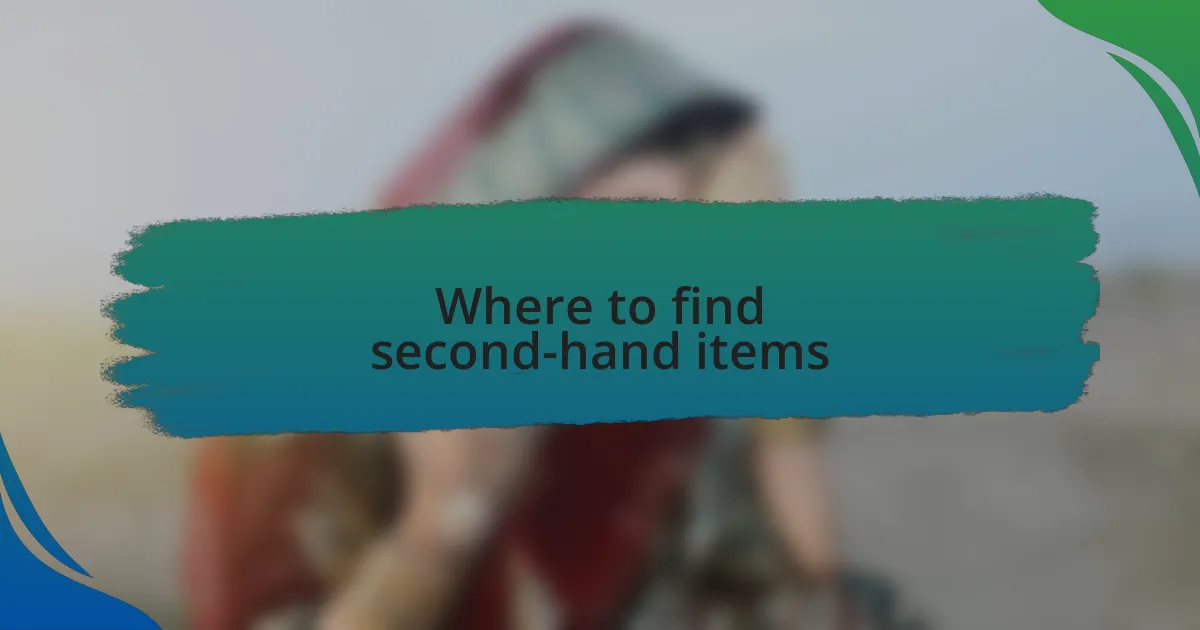
Where to find second-hand items
When it comes to sourcing second-hand items, thrift stores and consignment shops are often my go-to places. I still remember discovering a hidden gem in a small local thrift store – a stunning 70s bohemian blouse that instantly brightened my wardrobe. There’s something so thrilling about sifting through racks of clothes that might hold the perfect piece just waiting to be found. Have you had a similar experience where a mere store visit turned into a treasure hunt?
Online platforms have drastically changed the second-hand shopping landscape. I often browse apps like Depop and Poshmark while sipping my morning coffee. It’s fascinating to see how I can connect with sellers from around the world and find unique pieces that tell a story. Sometimes, I wonder how many other shoppers have been enchanted by the same vintage find.
Garage sales and estate sales can also be surprisingly fruitful. I once stumbled upon a neighborhood garage sale where an elderly woman was selling her late mother’s vintage collection. Each item had a story, and the emotional connection was palpable. It felt incredible knowing that I was giving these cherished pieces a new lease on life. Have you ever found something that just felt like it belonged with you?
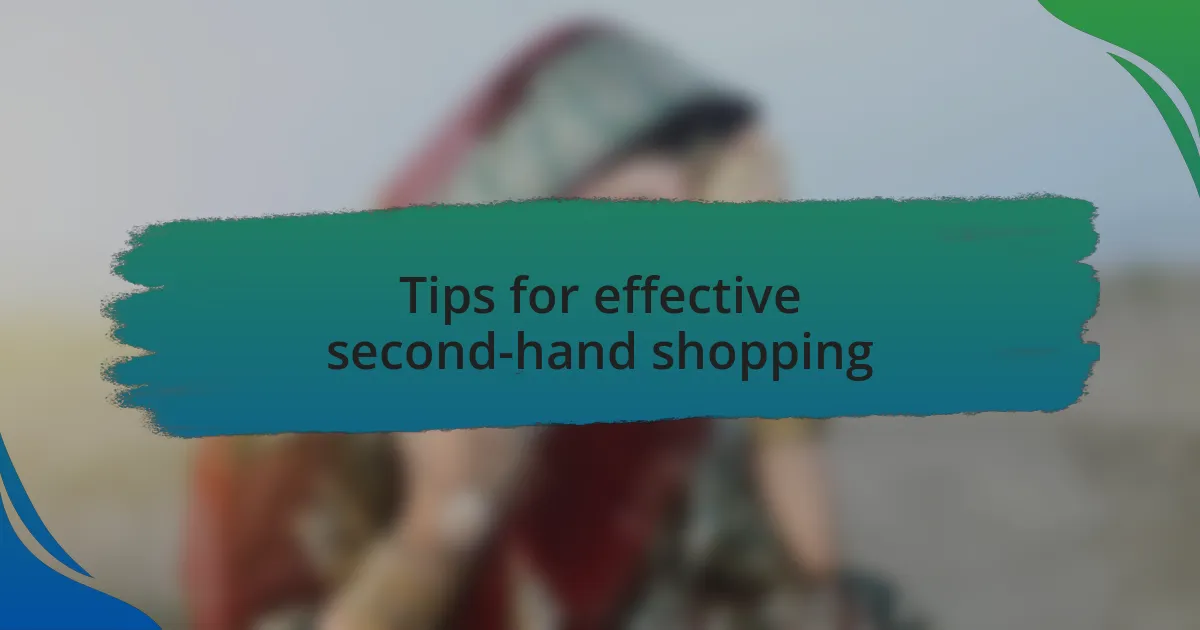
Tips for effective second-hand shopping
When I dive into second-hand shopping, patience is key. One afternoon, I spent hours in a local thrift shop, and just when I thought I’d seen it all, I uncovered a vintage leather jacket that fit like it was made for me. That moment reminded me that great finds often require time and a willingness to dig deep. Have you ever found the best piece after what felt like a long search?
Another tip is to keep an open mind about sizing. I recall trying on a beautiful dress that was a size or two larger than my usual fit. Instead of passing it by, I explored the idea of getting it tailored. The decision transformed it into my favorite go-to outfit, perfectly customized just for me. How often do we overlook something simply because it doesn’t fit perfectly off the rack?
Finally, don’t hesitate to ask questions. I remember visiting a consignment shop and chatting with the owner about a pair of unique boots. She shared their story, which made me appreciate them even more. By engaging with sellers, you not only gain insights into the piece’s history but also possibly strike a deal. Have you thought about how a simple conversation can enhance your shopping experience?
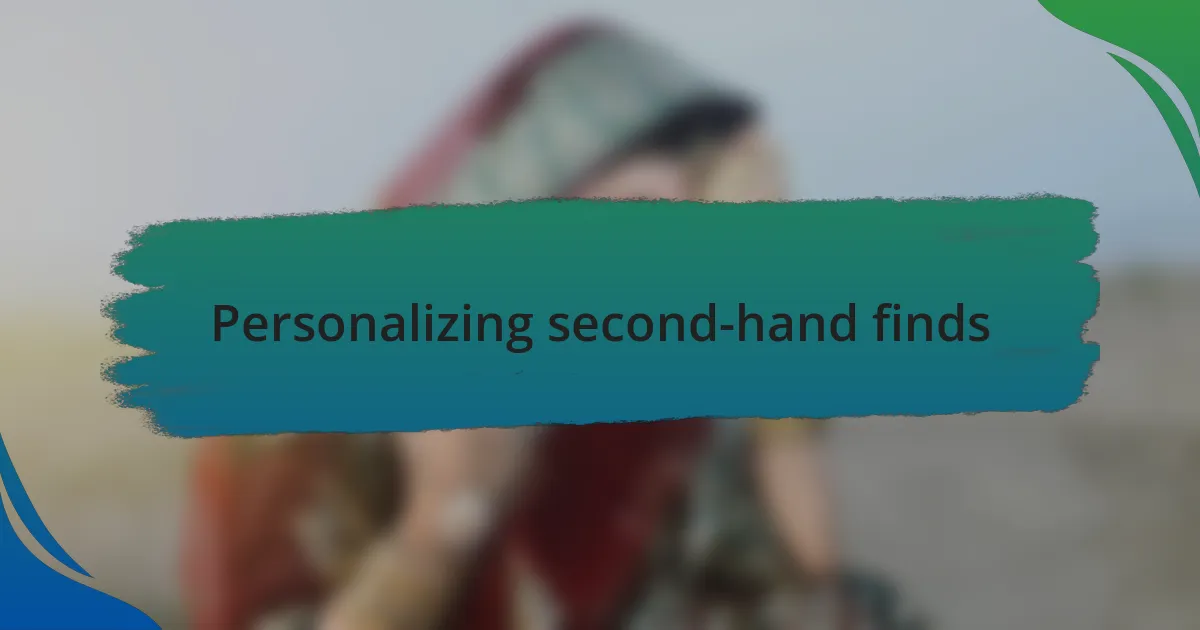
Personalizing second-hand finds
When it comes to personalizing second-hand finds, I’ve discovered that small adjustments can completely transform a piece. I once found an oversized graphic sweater that looked a bit lost on me. Instead of leaving it behind, I decided to chop it into a cropped version. The result? A fresh and trendy staple that matched my style perfectly. Have you ever thought about how simple alterations can breathe new life into an old garment?
Adding unique accessories is another fantastic way to personalize a second-hand item. I remember buying a basic black dress at a thrift store, but it felt too plain for my taste. I paired it with a vibrant belt and some statement earrings I had stashed away. Those small changes turned a forgettable dress into a standout outfit that made me feel confident and original. Isn’t it amazing how accessories can elevate even the simplest wardrobe pieces?
Lastly, consider embellishing items yourself. One time, I stumbled upon a denim jacket with a few small stains. Instead of seeing it as a flaw, I decided to patch over them with fun patches I had collected from various places. By doing this, I created a one-of-a-kind piece that reflected my personality and told a story. What items in your wardrobe could benefit from a little creative touch?